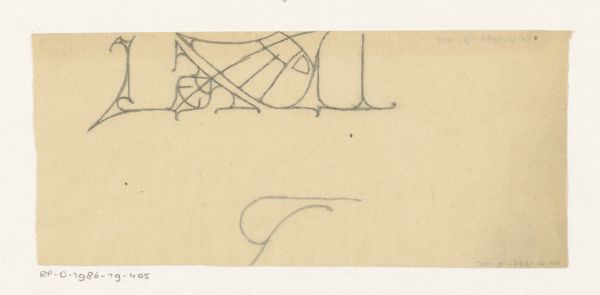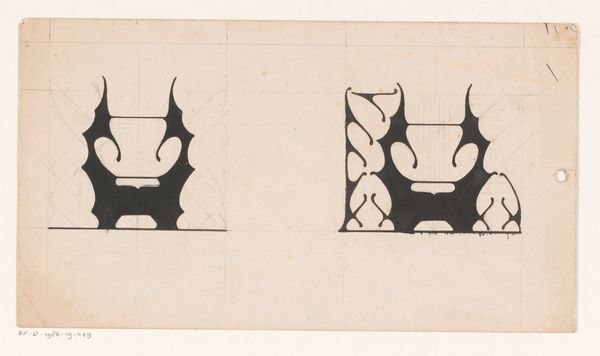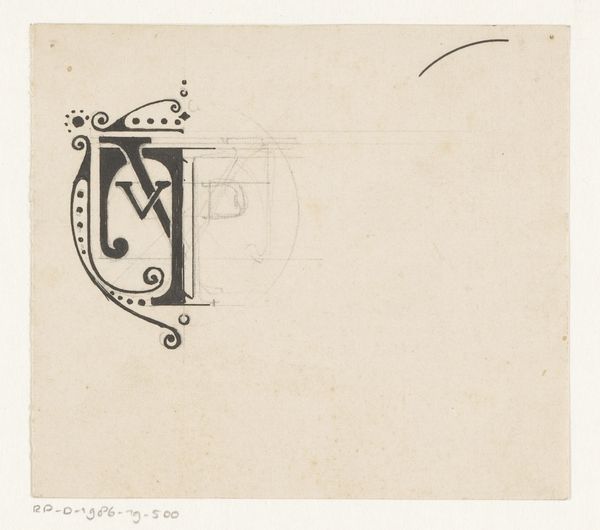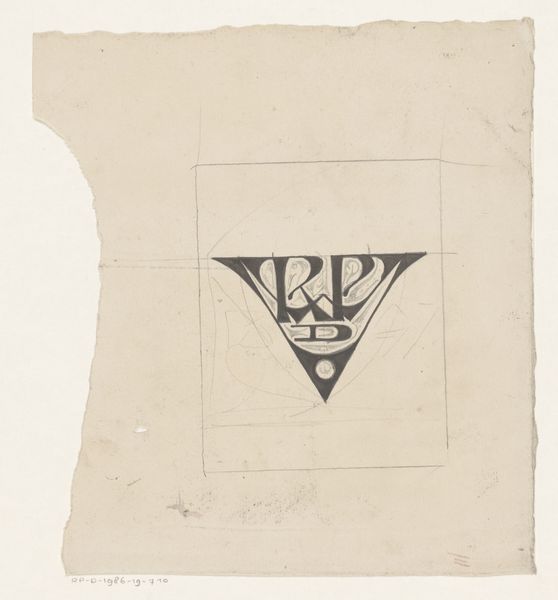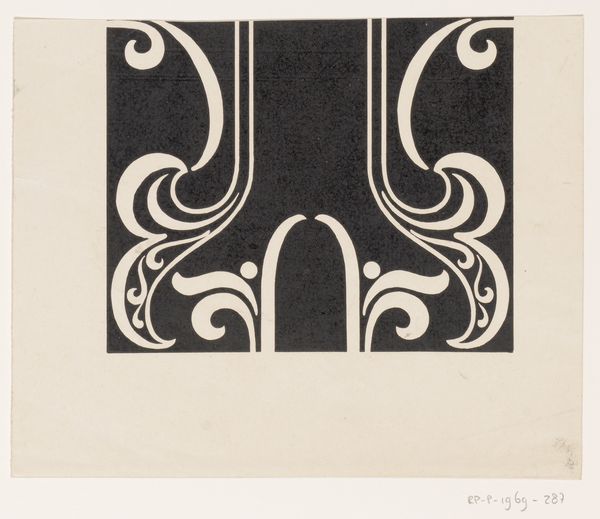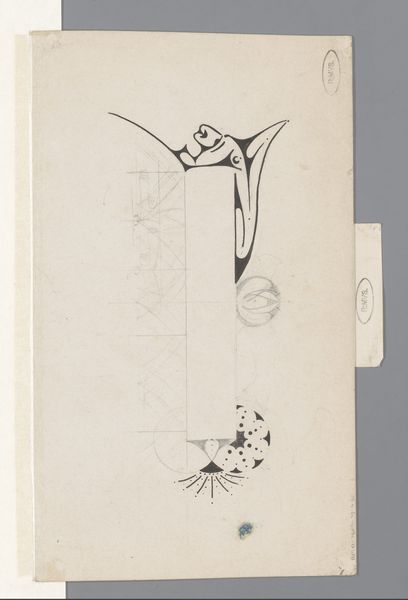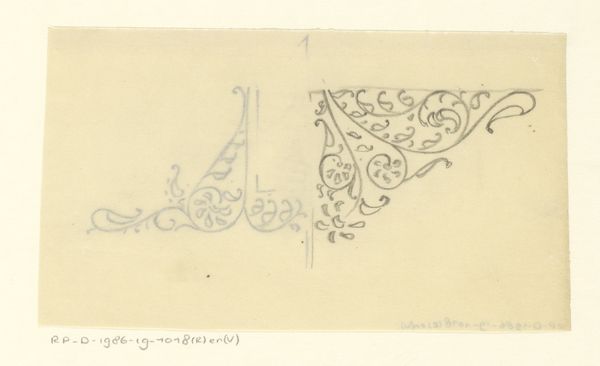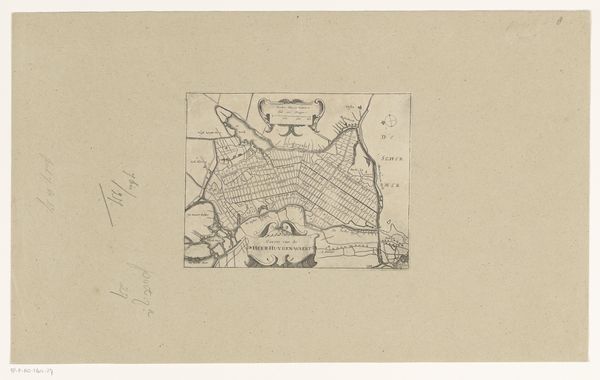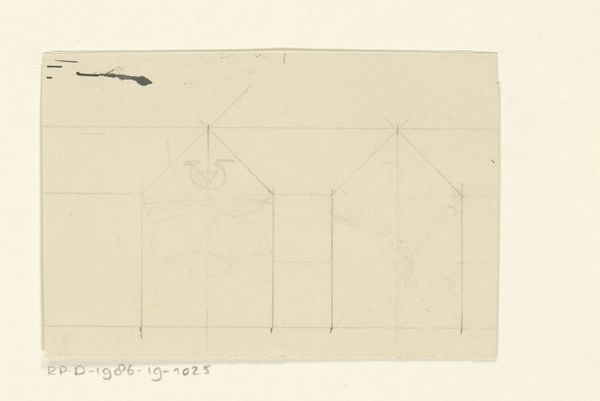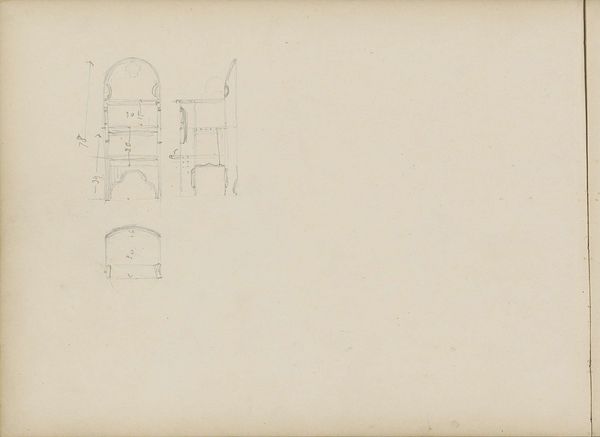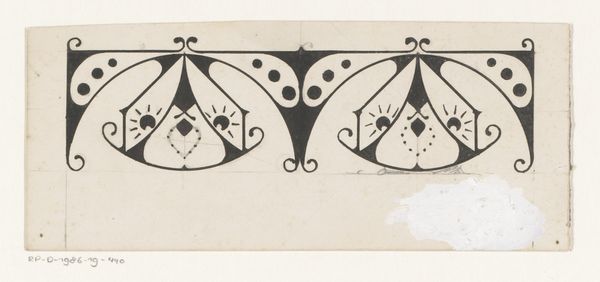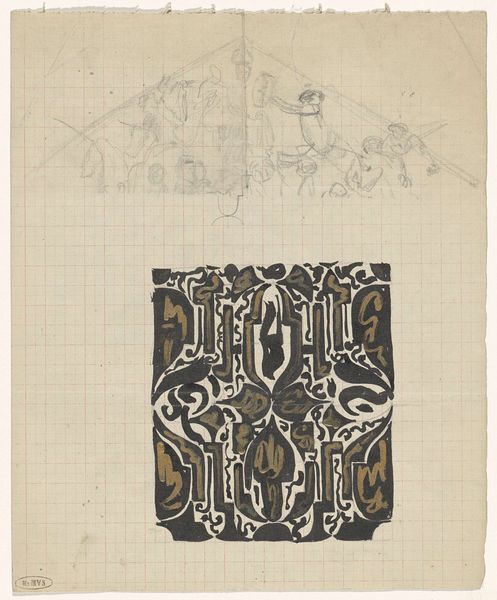
Ontwerp voor een titelhoofd van: Arcadia, letterkundig maandblad voor dames 1900
0:00
0:00
drawing, graphic-art, paper, typography, ink, pencil
#
drawing
#
graphic-art
#
imaginative character sketch
#
toned paper
#
light pencil work
#
art-nouveau
#
childish illustration
#
pen sketch
#
paper
#
personal sketchbook
#
typography
#
ink
#
ink drawing experimentation
#
geometric
#
pen-ink sketch
#
pencil
#
line
#
sketchbook drawing
#
decorative-art
#
sketchbook art
Dimensions: height 132 mm, width 250 mm
Copyright: Rijks Museum: Open Domain
Editor: This drawing, "Ontwerp voor een titelhoofd van: Arcadia, letterkundig maandblad voor dames," which translates to "Design for a title page of: Arcadia, literary monthly for ladies," was created around 1900 by Reinier Willem Petrus de Vries. It's a pencil and ink design on paper for graphic art and typography, and I'm struck by the contrast between the meticulous grid and the organic, almost floral, design. What symbolic readings do you find in this artwork? Curator: The most compelling aspect here is the intersection of rational order and natural form. The grid signifies modernity, the industrial age's push for standardization and efficiency, while the floral design, typical of Art Nouveau, evokes an idealized, pre-industrial past, a return to nature, a sense of the feminine, and the "Arcadia" of the title itself—a pastoral paradise. Editor: So, it’s playing with contrasting ideals, right? The geometric versus the organic? Curator: Precisely. The title, designed for a "literary monthly for ladies," suggests that this contrast speaks to the social role of women at the time. They were often perceived as both ornaments within the modernizing world, represented by the floral design, and also subject to its rational structures, like the grid. It evokes memory and tradition. Do you agree? Editor: That makes sense. It's almost as if the design is containing this wilder, natural element within a defined structure. The fact that it's a design for a women's literary magazine brings another layer to it. It speaks to constraint but also intellectual liberation. Curator: Exactly! The image becomes a complex cultural symbol of its time, a nexus where artistic, social, and psychological forces converge. Thank you for guiding us towards this meaningful interpretation. Editor: It’s been incredibly insightful to look at this through a cultural lens! It changes how I see the role of art and design.
Comments
No comments
Be the first to comment and join the conversation on the ultimate creative platform.

